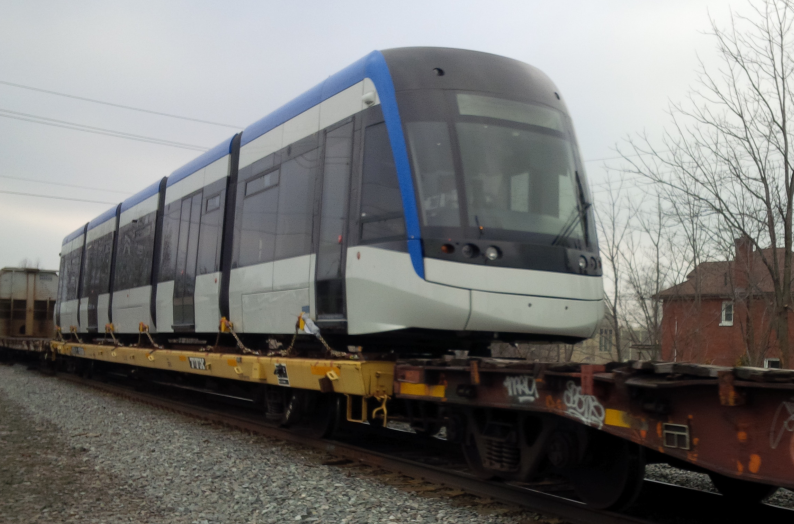denfromoakvillemilton
Senior Member
4.4 Billion is too much for an LRT to Cambridge. It feels like they're almost putting it that high to push it off. Costs need to come down. Or a recession is needed.
|
|
|
These construction cost escalations are getting out of hand.
For Stage 2 option C (full extension from Fairview to Downtown Cambridge), they are estimating an additional $1B for inflationary costs alone between now and a hypothetical start date of 2030. I can understand grade separations making the project more expensive (they do note that there are six new major grade separations for Stage 2, compared to zero for Stage 1), but it is abundantly clear that they are wasting so much money by not being able to move these projects through quickly. They aren't even planning on getting the Preliminary Design Business Case done until 2027 - four years from now. The region should have been more prepared and had Stage 2 teed up and ready for right after Stage 1 opened.
Of course, we should just cut the business case entirely. We never used to do these for projects; they mysteriously became part of the process right after McGuinty cut back the EA process and essentially added everything back that was cut and then some.
Now, I hear some saying a business case is a sensible idea............sure, in theory, but let's deal with reality, in every case but 1, that I can think of; the business case done for Mx has recommended going ahead with the proposed project; there was one exception, and it went ahead anyway too. LOL
In other words, the choice of whether to build, and the major details of a route are largely political, and secondarily those of professional staff. The consultants hired to do these reports dutifully report out what is expected of them, and in the process waste needless time and money.
We still have a similar issue with E.A.s in that they tend to examine things that absolutely will not be changed, and ToR (terms of reference) and methodology will almost always ensure that. Why are we wasting that time and money then? E.A.s should be limited to examining actual choices and mitigation strategies around environmental impact. (for instance, a crossing of a valley/ravine). Should we bridge or tunnel? If we cut down trees, how do we minimize what we cut and how to we make up for any losses we create?
Wasting time on much of anything else is just money for naught.
I'm all for a business case looking at two equally viable alternatives and determining the better value-for-money, but since we don't really do that, there really isn't much point.
How does it compare to the current 302 ION bus? If it's slower, in what way would an LRT represent an improvement? Is the 302 over-crowded or prone to getting stuck in traffic?I have a lot of trouble with iOn Phase II because it seems to have played to every business lobby and community along the way - leading to a winding, slow routing that won't actually work that efffectively.
Vibes and development- the bus uses a highway right now. And that’s all fine, but let’s be responsible with our development attractors. Maybe ensure it’s at least as functional as the existing iON.How does it compare to the current 302 ION bus? If it's slower, in what way would an LRT represent an improvement? Is the 302 over-crowded or prone to getting stuck in traffic?

Interesting. I can't comment on the vibes (personally think seats on the ION buses are more comfortable than the seats on the ION trams).Vibes and development
And that's a huge speed booster (compared to any rail alignment).the bus uses a highway right now
Agreed. Anything that costs billions and will be slower than the 302 ION bus is highly questionable imo.let’s be responsible with our development attractors. Maybe ensure it’s at least as functional as the existing iON.
I'm a bit skeptical about claims of how LRT generate development (correlation ≠ causation). How much development can be attracted by simply upzoning Hespeler Rd and removed the parking requirements?
Build the Cambridge portion of the line with a small satellite OMSF, and use the CP tracks for transporting Cambridge ION trains to the Northfield OMSF overnight when they need more significant maintenance... Maybe this could be accompanied by an express bus service from Preston Station to downtown Kitchener and infrequent (like half-hourly?) through-running on the CP line.The CP Toyota line is in a whole different category than the CN's Waterloo Spur. (Which, by the way, is owned by the Region). I can't imagine CP agreeing to share it with a LRT - it's used to serve Toyota with auto racks, and the timing of that plus the technical conflicts would be much greater.
But I agree with building the Cambridge portion as a separate discrete line. Delaying the Fairway - Preston portion for a decade or more saves a couple $B which would offset the added cost of a OMSF in the south end..... and servicing the whole line from Northfield seems a bit inefficient in itself anyways.
- Paul




